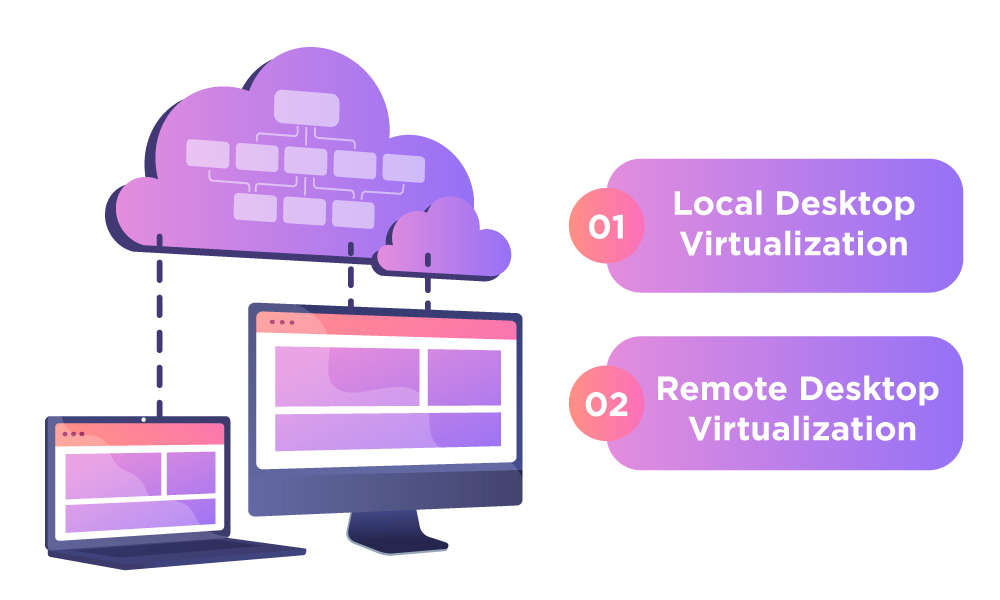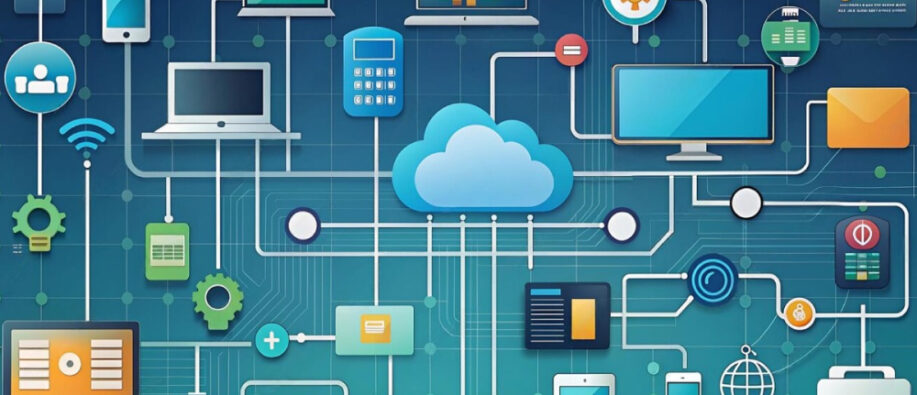Can anyone attend two family functions at the same time? Normally, no. However, in this technological era, almost anything seems possible. While we may not be able to do it ourselves, desktop virtualization technology allows us to access and use a regular desktop from anywhere, at any time.
This blog discusses the concept of virtual desktops, their different types, how they work, and their benefits. Let’s explore!
What is Desktop Virtualization?
It's only the installation of fake static software on the desktop of the end user. The virtual desktop allows the end user to use their regular desktop from anywhere, at any time.
Types of Desktop Virtualization
- Hosted Virtual Desktops (HVDs)
HVDs allow the usage of desktop computer systems and apps from any device through the cloud. But for this one must have a better internet connection. These are flexible, keep data safe, and save money. However, they can be hard to access, customize, and manage.
- Virtual Desktop Infrastructure (VDI)
VDI allows the remote use of desktops and apps like AnyDesk. It's secure, cost-effective, scalable, and reliable. But it needs a good internet connection. It can be costly, takes time to set up, and may have performance issues with unsteady internet.
- Remote Desktop Services (RDS)
RDS is a Windows-based system that lets you use Windows apps and desktops from distant places. It started in 1988. It helps with remote access, teamwork, saving money, and managing data.
- Local Desktop Virtualization (LVD)
On your PC, LVDs run their own operating systems. They help save on hardware costs, keep data secure, make moving systems easy, and work well with physical devices. But they can have performance problems, be hard to set up, need extra licenses, and depend on the physical computer.
How Does Desktop Virtualization Work?
Virtualization happens in several ways. Two main types are:

- Local Desktop Virtualization
The process of establishing a virtual machine (VM) on a client device's operating system is known as local. Virtualization of hardware makes this feasible. Activities and operations are carried out on the local hardware after the connection is established. When users don't require access to the CPU, RAM, or network connections, this method is ideal.
- Remote Desktop Virtualization
The main purpose of this virtualization is to establish a remote connection on the server. End users have remote access to the network, allowing them to engage with the server side for tasks like coding, application development, CMS implementation, and so on.
Everything about the connection is as smooth as it would be locally. To provide a customized experience, it may also be configured with certain programs, preferences, and settings.
Key Benefits of Desktop Virtualization
- Provide Security
IT managers may be able to centrally regulate user access to data and apps with desktop virtualization software. It lowers data risk by making the process of deleting user access from persistent virtual desktops simpler. Data center storage lowers the possibility of breaches in the event that it is missing or stolen.
- Ideal Management
Because desktop virtualization enables remote control of server and desktop settings, it provides flexibility to company owners and companies. It provides remote desktops for software updates, application installation, and technical concerns, and it functions best in IT organizations.
- Elegant and Smooth Work
IT managers can manage many activities at once using this virtualization, which saves time, money, resources, and effort. It enhances productivity and user experience without having an impact on overall business operations.
- Saves Money
Desktop virtualization is quite cost-effective and advantageous. Because it manages everything on a single server, you may avoid investing in various pieces of hardware and software. Additionally, there is no latency or delay when numerous users connect and administer the desktop simultaneously.
Summing Up!
Technological growth is making many things possible nowadays, and one of them is desktop virtualization. This technology saves money, provides security, and works smoothly. There are four main types - Hosted Virtual Desktops (HVDs), Virtual Desktop Infrastructure (VDI), Remote Desktop Services (RDS), and Local Desktop Virtualization (LVDs). In this blog, we discuss desktop virtualization in detail to help you understand this popular concept. For more tech-related content and insightful blogs, keep visiting us at SecureITWorld.
Recommended For You:
What is the Role of Artificial Intelligence in Cybersecurity?





